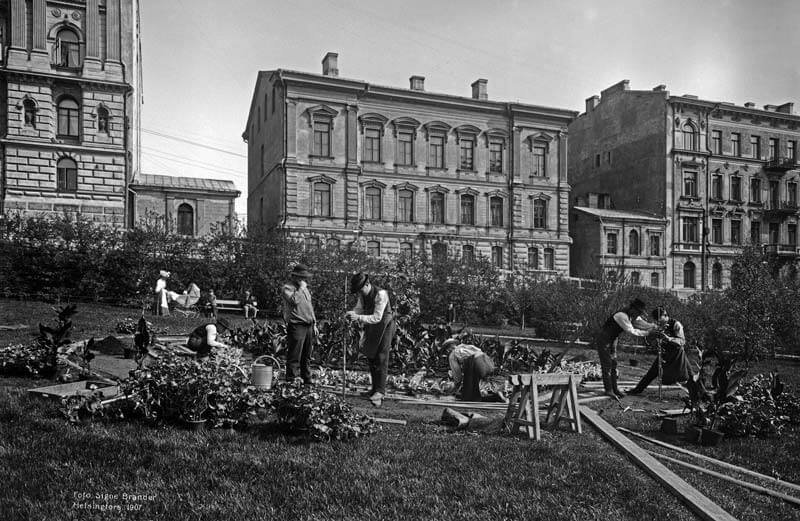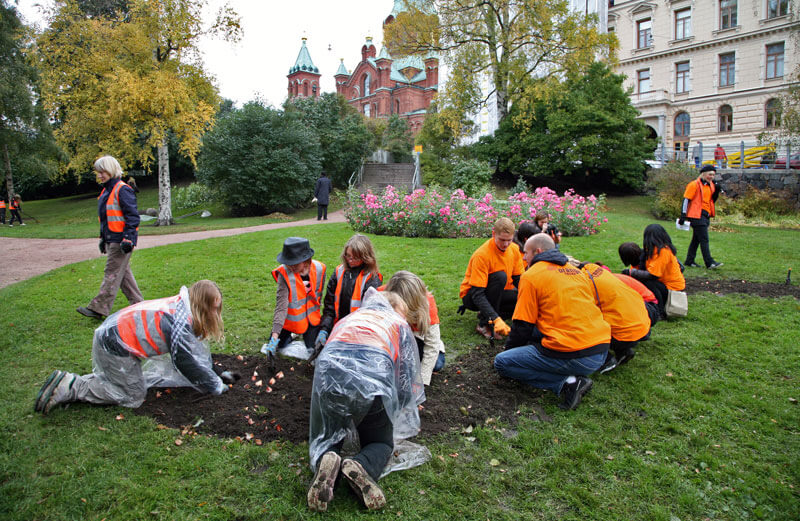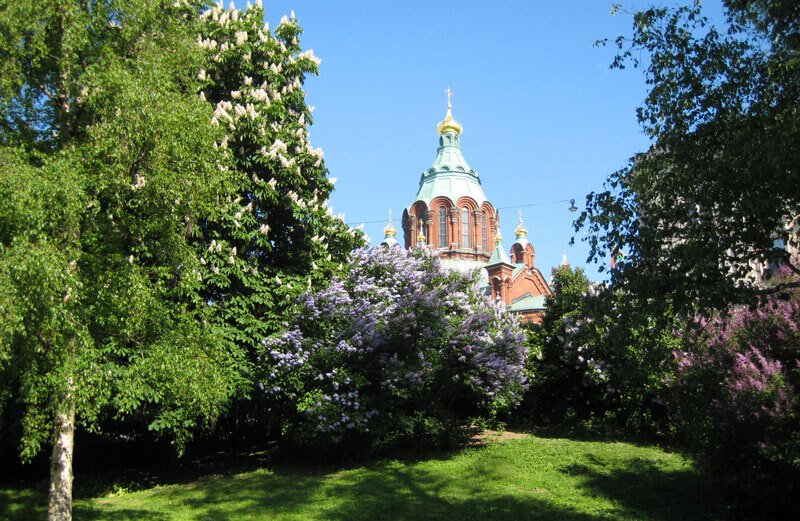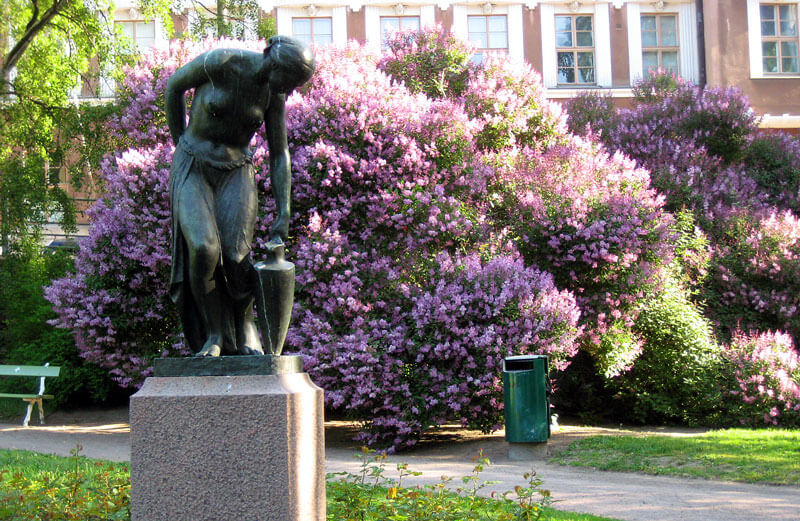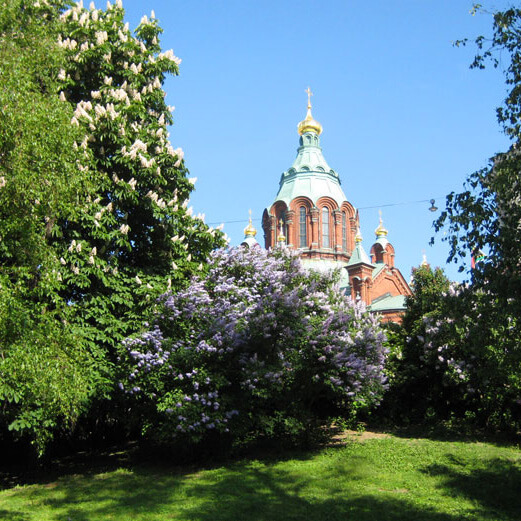Formerly Katajanokanpuisto Katajanokka Park
Work began on creating Katajanokka Park in 1897 based on the designs of City Gardener Svante Olsson. The aim was to connect three distinct and irregular areas on different levels by following the contours of the terrain.
The upper section of the park has a children’s playground bordered by shrubs. There is also an enclosed dog park. The lower section of the park is a flat area with birch and maple trees and surrounded by tall lilacs and mock orange shrubs. Cherry trees and crabapple trees have also been planted in the park in recent years. The large trees, impressive shrubs and pretty roses around the statue create a charming environment in which many ferry passengers from the nearby harbour can also relax. The view from the park up to Uspenski Cathedral with its golden cupolas is itself quite uplifting. Uspenski Cathedral is the largest Orthodox church edifice in Western Europe.
The park is adorned by a bronze statue entitled The Water Bearer. The romantic design by Viktor Malmberg (1867–1936) pays homage to the realistic and idealistic sculptures of the 19th century. It depicts a young woman raising a water jar, dressed in a garment typical of Antiquity. The statue was made in 1923 and placed in its present location in 1924. Numerous statues were introduced to the city’s parks in the 1920s. The themes were no longer necessarily symbolised national themes; instead, the new statues were designed freely and often in the Classical and Antique style. Helsinki had a need to prove that it was truly an international city.
